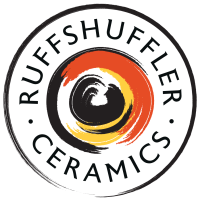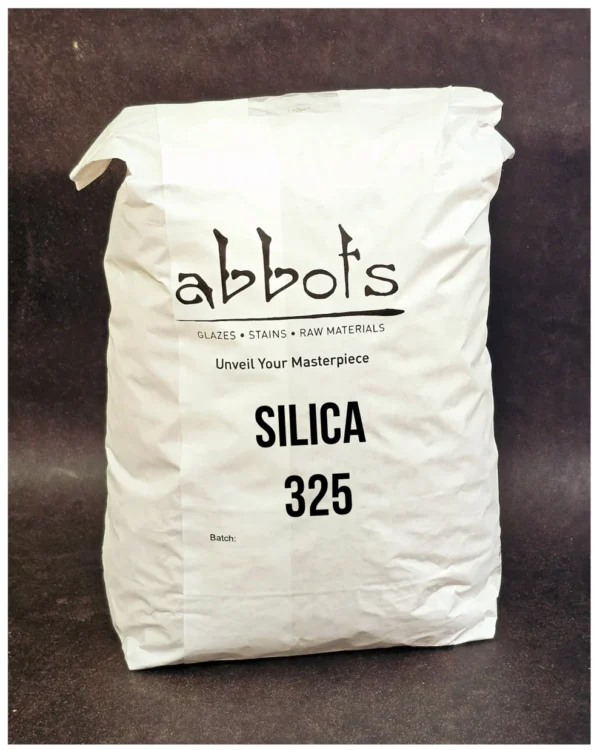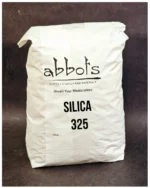Abbots Silica 325 Mesh
Product Details
The term ‘silica’ can be misleading. It is important to understand the difference between ‘silica mineral’, ‘silicates’, and ‘silica glass’. Quartz is the best example of a natural mineral that is almost pure silicon dioxide (it is the most abundant mineral on planet earth). Other ceramic minerals like feldspar and clay contain some ‘free silica’ (accessory quartz). However these also usually contain ‘silicates’, that is, SiO2 chemically combined with other oxides to form crystalline minerals.
Individual particles of quartz have a high thermal expansion (and associated contraction) and significantly change their volume as they pass up and down through ‘inversion’ temperature points during firing. This can cause a form of body cracking called ‘dunting’ (because only some of the silica gets dissolved in the feldspar glass melt). The cracking occurs as micro-cracks radiate out from each microscopic particle of quartz and propagate into larger cracks. High quartz bodies are usually unsuitable for ovenware and ware that must tolerate sudden temperature changes. However, this behaviour is advantageous to glaze fit since it puts the ‘squeeze’ on the glaze to prevent crazing. At the same time silica in glazes tends to dissolve and form low expansion silicates that reduce glaze expansion and also prevent crazing. In both cases, silica powder of small grain size is advantageous.
Safety Note:
Handling silica requires caution due to its fine particulate nature. Prolonged inhalation of silica dust can lead to serious health issues like silicosis. Proper ventilation, dust control, and protective equipment are essential when working with silica in any form.
| Oxide | Analysis |
| SiO2 | 100.00% |







Rating & Review
There are no reviews yet.